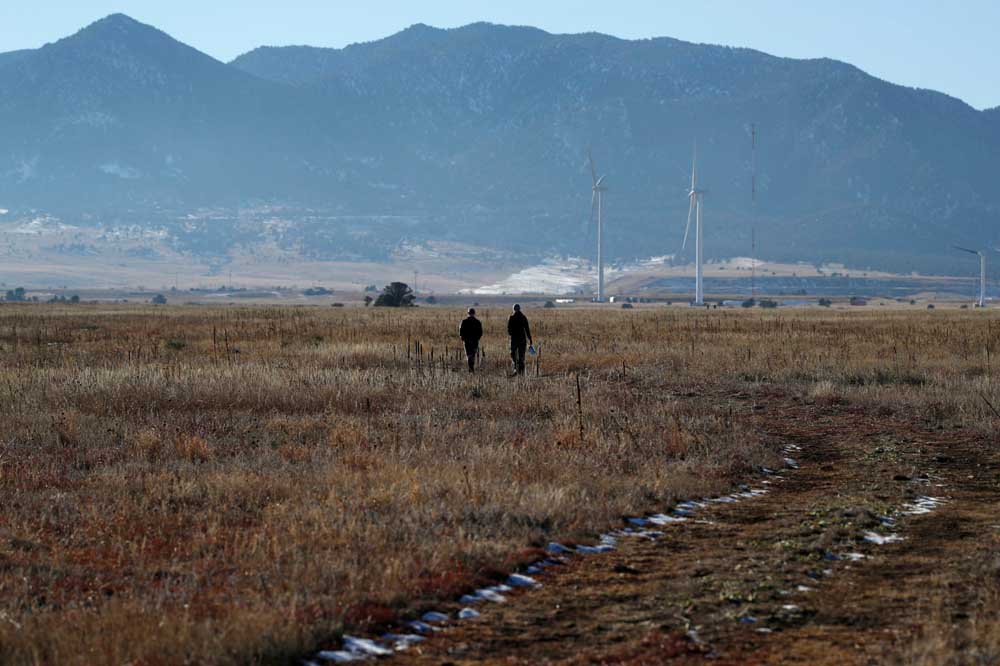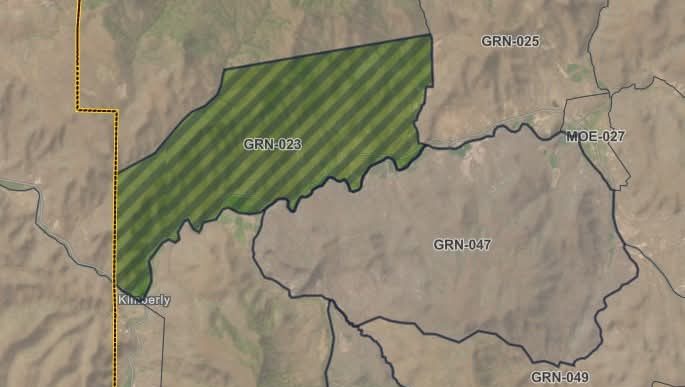Heavily polluted weapons sites are now home to wildlife
Published 12:00 am Thursday, February 6, 2020

- FILE - In this Sunday, Nov. 18, 2018 file photo, hikers head down a trail in the Rocky Flats National Wildlife Refuge in Broomfield, Colo. The former nuclear weapons plant northwest of Denver opened to hikers and cyclists in September 2018, but some activists question whether it’s safe. (AP Photo/David Zalubowski)
DENVER — From a tiny Pacific island to a leafy Indiana forest, a handful of sites where the United States manufactured and tested some of the most lethal weapons known to humankind are now peaceful havens for wildlife.
Trending
An astonishing array of animals and habitats flourished on six obsolete weapons complexes — mostly for nuclear or chemical arms — because the sites banned the public and other intrusions for decades.
The government converted them into refuges under U.S. Fish and Wildlife Service management, but the cost of the conversions is staggering, and some critics say the sites have not been scrubbed well enough of pollutants to make them safe for humans.
The military, the U.S. Department of Energy and private companies have spent more than $57 billion to clean up the six heavily polluted sites, according to figures from military and civil agencies.
Trending
And the biggest bills have yet to be paid. The Energy Department estimates it will cost between $323 billion and $677 billion more to finish the costliest cleanup, at the Hanford Site in Washington state where the government produced plutonium for bombs and missiles.
Contamination left behind
Despite the complicated and expensive cleanups, significant contamination has been left behind, some experts say. This legacy, they say, requires restrictions on where visitors can go and obligates the government to monitor the sites for perhaps centuries.
“They would be worse if they were surrounded by a fence and left off-limits for decades and decades,” said David Havlick, a professor at the University of Colorado at Colorado Springs who studies military-to-wildlife conversions. “That said, it would be better if they were cleaned up more thoroughly.”
Researchers have not examined the health risks to wildlife at the cleaned-up refuges as extensively as the potential danger to humans, but few problems have been reported.
At least 30 of the 560-plus refuges managed by the wildlife service have some history with the military or weapons production. Most handled conventional weapons, not nuclear or chemical.
Many of the conversions came after the first and second world wars. It was an inexpensive way to expand the national refuge system, especially in urban areas with scarce open space, said Mark Madison, the Fish and Wildlife Service’s historian.
When the Cold War ended in the 1980s, more surplus military lands were earmarked for refuges. Some were among the most dangerously polluted sites in the nation but held swaths of hard-to-find habitat.
Reborn as idyllic prairie
Most skeptics agree the refuges are worthwhile but warn that the natural beauty might obscure the environmental damage wreaked nearby.
The military closed the sites to keep people safe from the dangerous work that went on there, not to save the environment, said Havlick of the University of Colorado.
“It’s not because the Department of Defense has some ecological ethic,” said Havlick, author of a book about conversions, “Bombs Away: Militarization, Conservation, and Ecological Restoration.”
Converting a heavily polluted weapons complex into a wildlife refuge is cheaper than making it safe for homes, schools and businesses, said Adam Rome, who teaches environmental history at the State University of New York at Buffalo.
“In some cases, they could have conceivably made the site into something that was economically valuable,” but that would have cost more, Rome said.
Saving ‘something positive’
Hanford — where the cleanup has already cost at least $48 billion and hundreds of billions more are projected — may be the most troubled refuge of all.
Parts of a C-shaped buffer zone around the perimeter are open to visitors as Hanford Reach National Monument. But cleanup costs for an area where contaminated waste is stored are soaring, and Department of Energy investigators say the project has been plagued by fraud and mismanagement.
Washington state officials are worried that the Trump administration wants to reclassify millions of gallons of wastewater at Hanford from high-level radioactive to low-level, which could reduce cleanup standards and cut costs.
The Energy Department told the state it has no current plans to change the classification. State officials say they want long-term and legally binding assurances.
Madison, the Fish and Wildlife Service historian, said the refuges are salvaging something valuable from ecological devastation.
“A lot of the environmental stories are kind of doomy and gloomy, and these are successful ones, something positive,” he said.
If agency officials believed the sites were unsafe for the public, he said, they would not work there.
“They’re there all the time,” Madison said. “They’re not going to want to be in a place with chemical pollution or radiation problems.”









